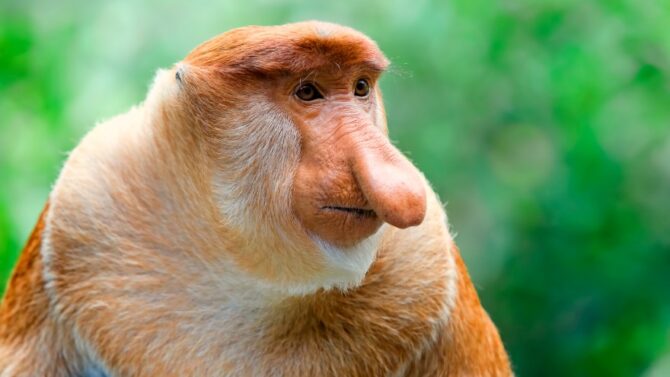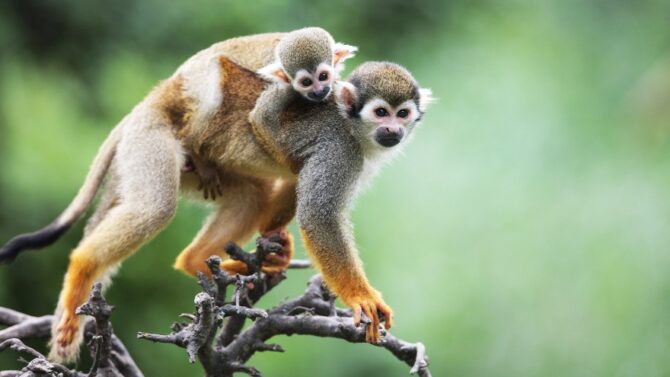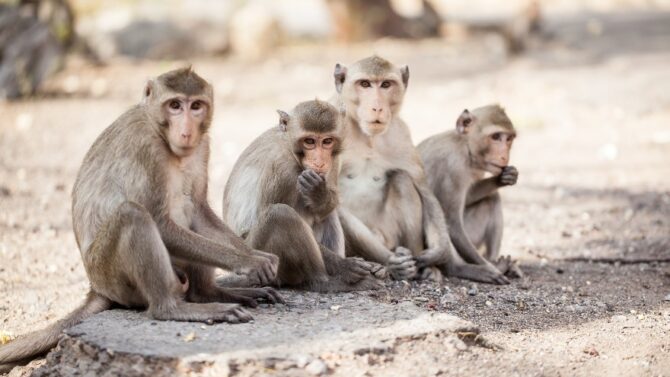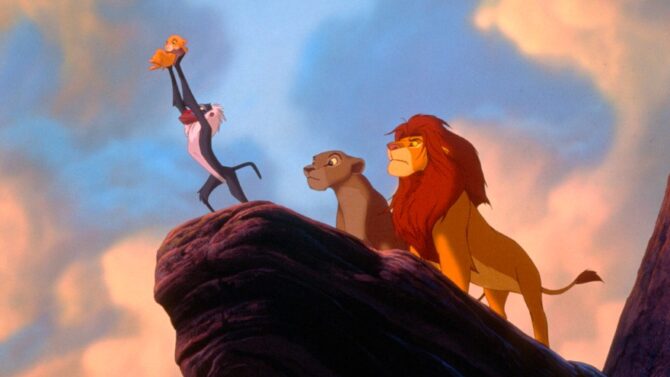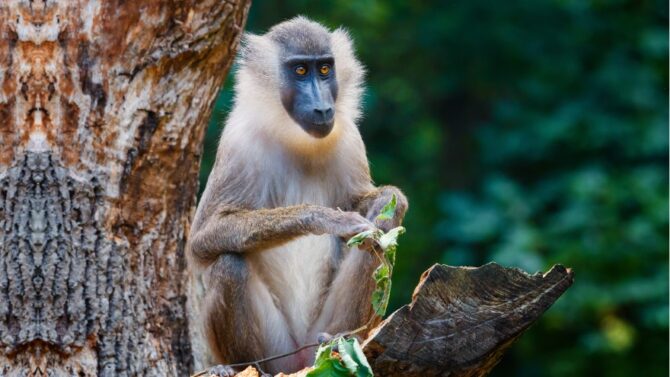There are many monkeys in the world, all with their peculiar looks. Generally, monkeys don’t make the beauty standard in any way.
However, there are some species that are considered strange and ugly monkeys, even by primates’ standards of looks.
There weren’t so many we could find, but we were able to round up the 5 ugliest monkeys in the world.
The five ugliest monkeys are the proboscis monkey, the bald uakari, the chacma baboon, the spider monkey, and the tarsier.
Read on to discover these ugly animals and why they made this list.
The Ugliest Monkeys in the World
1. Proboscis Monkey
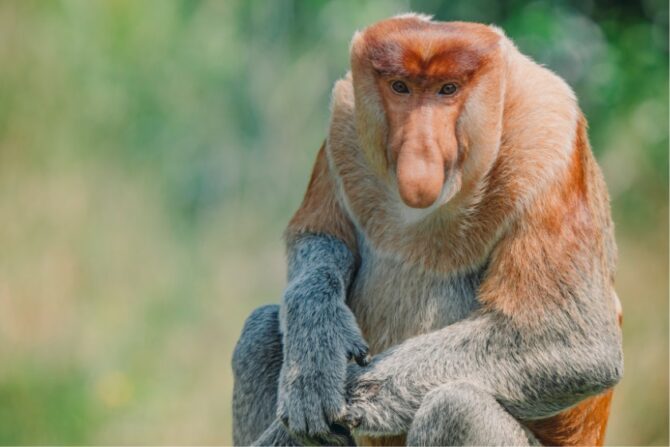
- Scientific Name: Nasalis larvatus
- Length: 26 to 30 inches
- Weight: 35 to 50 pounds
- Identifying Features: Long tail, large nose, reddish brown color
- Where Found: Borneo
- Conservation Status: Endangered
First on our list is the proboscis monkey, and the first noticeable trait is the long nose.
This monkey species is a native of Borneo, and it is endemic to the island. Like every other monkey from Asia and Africa, it is considered an old-world type.
Preferred habitats include swamps and other coastal regions.
Many humans consider the nose an ugly sight, but amongst these monkeys, the nose is equivalent to well-toned muscles.
Males use the nose to attract females, and the longer the nose, the more attractive an individual is.
Some other physical features include reddish-brown fur, a long tail, and a long coat. As an old-world monkey, the proboscis is large, weighing up to 50 pounds, making it one of Asia’s largest species.1
Its diet is predominantly herbivorous, though it eats insects on some occasions.
With only a few 5,000 individuals left, the proboscis monkey is classified as endangered and needs to be protected.
2. Bald Uakari
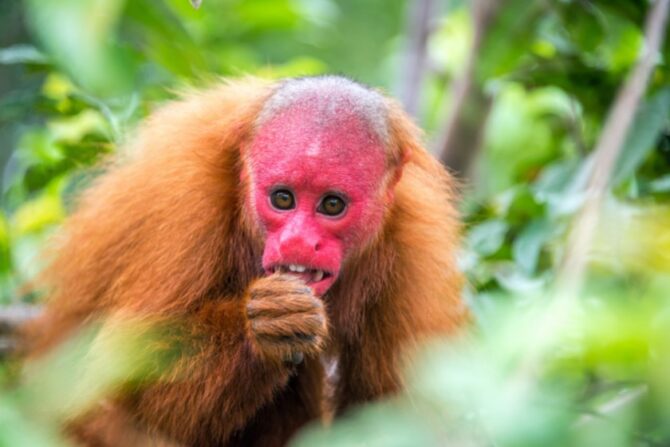
- Scientific Name: Cacajao calvus
- Length: 17.3 to 18.1 inches
- Weight: 6.1 to 7.6 pounds
- Identifying Features: Short tail, crimson face, long coat
- Where Found: Brazil, Peru
- Conservation Status: Vulnerable
The bald uakari is also known as the bald-headed uakari, and as the names show, this monkey is characterized by a bald head.
The bald uakari also has an unusual crimson face which looks strange, but amongst the species, the face plays an important role.
The bright face shows good health, and the brighter a face is, the more likely a male uakari will find a mate.
The bald uakari lives in the South American regions of Brazil and Peru, where it inhabits forests.
These forests tend to get flooded, which makes climbing trees an essential attribute of the bald uakari.
Besides the bald head and crimson face, the uakari has a shaggy coat that’s either white or red.
The bald uakari can be considered an omnivore, but its diet predominantly consists of seeds. It is classified as vulnerable due to hunting and habitat loss.
3. Chacma Baboon

- Scientific Name: Papio ursinus
- Length: 20 to 45 inches
- Weight: 26 to 99 pounds
- Identifying Features: Brown fur, long snouts
- Where Found: Southern Africa
- Conservation Status: Least Concern
The chacma baboon is also known as the cape baboon, and it is an old-world monkey that lives in southern Africa.
With a weight that can get to 99 pounds, the chacma baboon is one of the largest monkeys in the world.
It features on this list because of its dull fur and unusual face. Its snout is long, and its canines are sharp, making it look more like a dog than a monkey. That explains why it’s called a dog-faced monkey.
Chacma also comes with a colorful posterior, which can be strange to onlookers.
There are a lot of theories surrounding the colorful posterior, one of which is that it serves a purpose in mating.
Males are widely bigger than females, and there’s always a patch of hair on the nape of the neck.
There are three subspecies of the chacma baboon, and though it is classified as the least concern, the population is dwindling as humans and baboons come more in contact.
4. Red-faced Spider Monkey
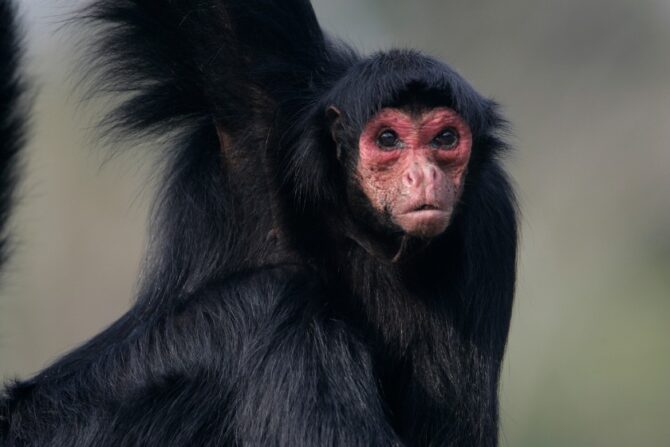
- Scientific Name: Ateles paniscus
- Length: 21.7 to 21.9 inches
- Weight: 19 to 20 pounds
- Identifying Features: red face, long hair
- Where Found: South America
- Conservation Status: Vulnerable
The red-faced spider monkey is not just ugly, it comes across as bizarre to many. Its long limbs and tail are like that of a spider, earning it the name.
Add the unusual limbs to the red face, and you have a creature that looks more like an alien than an actual monkey. That said, the strange look is more of an asset than a liability.
For starters, the limbs and tail make the spider monkey agile, especially when swinging through trees.
The long tail is prehensile and acts as a fifth limb when grabbing at branches. Another advantage of the spider monkey’s body is that it can easily walk on land.
Beneath the strange look is an intelligent mind, a positive attribute of the spider monkey. An example of this intelligence is its ability to make tools.
5. Tarsier

- Scientific Name: Tarsius
- Length: 3.6 to 4.4 inches
- Weight: 2.8 to 5.8 ounces
- Identifying Features: Big eyes, long hind limbs
- Where Found: Asia
- Conservation Status: Endangered
A tarsier is a form of monkey that belongs to the genus Tarsius, and all species can be found in Asia.
It used to be widespread, but a population decline has led to a narrower range. The tarsier looks like a little monster out of a horror movie with its wide, red eyes and brown fur.
To add to the horror movie description, the tarsier is nocturnal, popping out after sunset to begin the night.
Another physical feature it has is its long legs. This may make it look stranger, but the legs enable the tarsier to leap far.
Sadly, the tarsier has a declining population. Its major threat is habitat loss.
Final Thoughts
All the ugly monkeys on our list look strange in our estimation, but what we consider unattractive is their biggest strength.
We can learn from these ugly animals the value of every creature on earth, including those that aren’t eye-catching.
Next up…
- Smallest Monkeys In The World – Discover the smallest primates
- Have you seen these ugly fish species?
- These Weird Birds are the Most Bizare-Looking Creatures
- Why Does Australia Have Weird Animals?
References & Notes
- Proboscis Monkey. Britannica.
